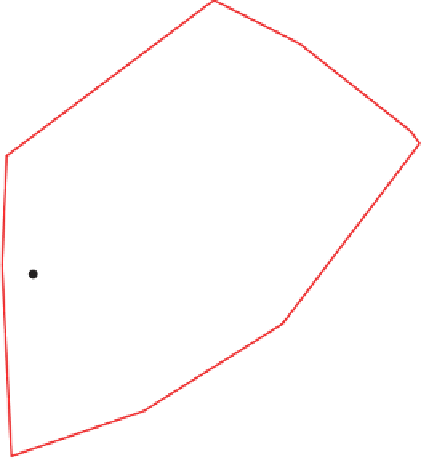Information Technology Reference
In-Depth Information
2.9.3 Convex hull
Figure 2.33 provides a useful general idea of the area occupied by the observations, but
it is evident that the spanning ellipse includes large areas without observations. This is
also true for the
κ
-ellipse. Although there are no extreme outliers in the scatterplot, the
restriction of the enclosure to be elliptical leads to an enclosed area that in general does
not represent the shape of a specified cluster of points adequately.
A possible remedy is to consider the
convex hull
of a set, which is defined as the small-
est convex set which contains all the points of the set. Figure 2.34 contains the convex
hull of the scatterplot of the two variables of the head dimensions data set superimposed
upon the spanning ellipse of Figure 2.32 and created by the following R code:
> MinSpanEllipse(Headdimensions.data[,5:6], asp = 1,
clus = rep(1,259), col.p = "black", col.clus = "blue")
> points <- chull(Headdimensions.data[,5:6])
> lines(Headdimensions.data[c(points,points[1]), 5:6],
col = "red")
In Figure 2.34 the area enclosed by the convex hull is much smaller than that inside
the spanning ellipse. The shape of the convex hull is very different from that of the ellipse.
Minimum spanning ellipse
Convex hull
40
45
50
55
60
65
70
75
LGAN
Figure 2.34
Convex hull enclosing the two-dimensional configuration of head dimen-
sions variables
LTN
and
LGAN
. The convex hull occupies a smaller area than the
minimum spanning ellipse.
















































































































































































































































